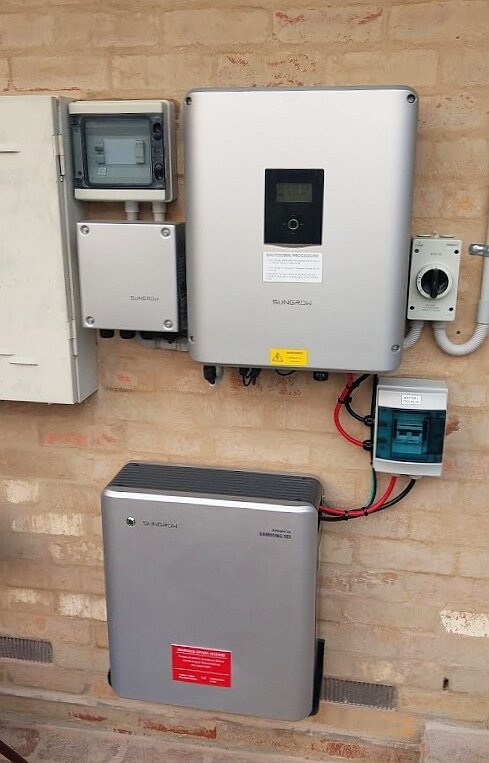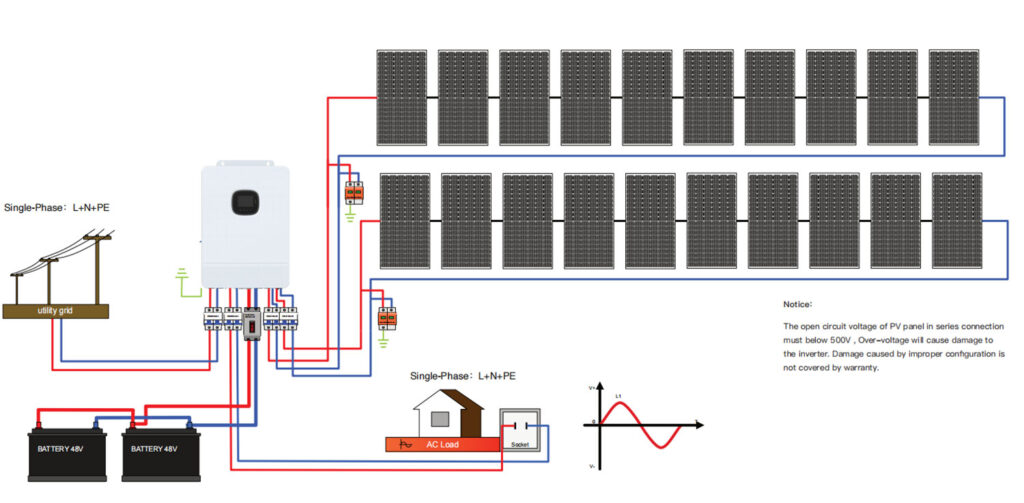
Hybrid inverter connected
Looking for the best way to avoid blackouts in Kenya and reduce your electricity bills? A hybrid solar inverter is your answer. This all-in-one system combines solar energy, battery storage, and grid power to give you uninterrupted electricity—even during power cuts.
Why Choose a Hybrid Solar Inverter in Kenya?
Uninterrupted Power Supply
Hybrid inverters allow you to store excess solar power in batteries and use it at night or during Kenya Power outages. This ensures a steady supply of electricity for your home or business.
Cut Down on Electricity Bills
By maximizing the use of free solar energy, hybrid systems reduce your dependency on the grid—saving you thousands in monthly energy costs.
Smart Energy Management
Modern hybrid inverters come with smart monitoring apps, letting you track usage, storage, and efficiency in real time—whether you’re at home or away.
Environmentally Friendly
Reduce your carbon footprint by switching to clean, renewable solar power. Support Kenya’s journey to a greener future.
Increases Property Value
Homes with solar hybrid systems are more attractive to eco-conscious buyers and are seen as future-ready properties.
Outcomes You Can Expect
Constant Power During Outages
Up to 70% Savings on Electricity Bills
Independence from the Grid
Long-term ROI on Equipment
A Clean, Green Energy Lifestyle

This diagram illustrates the key components and their connections in a hybrid solar power system:
Solar Panels: Capture sunlight and convert it into DC electricity.
MPPT Charge Controller: Optimizes the power output from the solar panels and charges the batteries efficiently.
Battery Bank: Stores excess solar energy for use during nighttime or power outages.
Hybrid Inverter: Converts DC power from the solar panels and batteries into AC power for household use and manages the interaction between solar, battery, and grid power.
AC Output to Loads: Supplies power to your home’s electrical circuits.
Grid Connection: Allows the system to draw power from the utility grid when solar and battery power are insufficient and can feed excess solar power back to the grid if net metering is available.